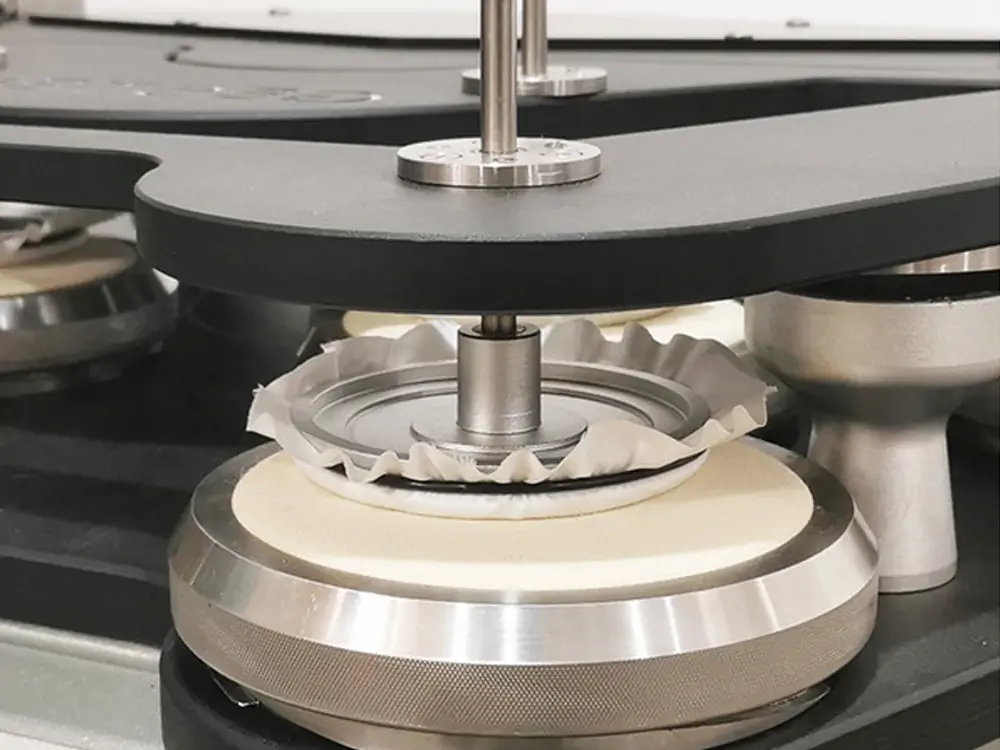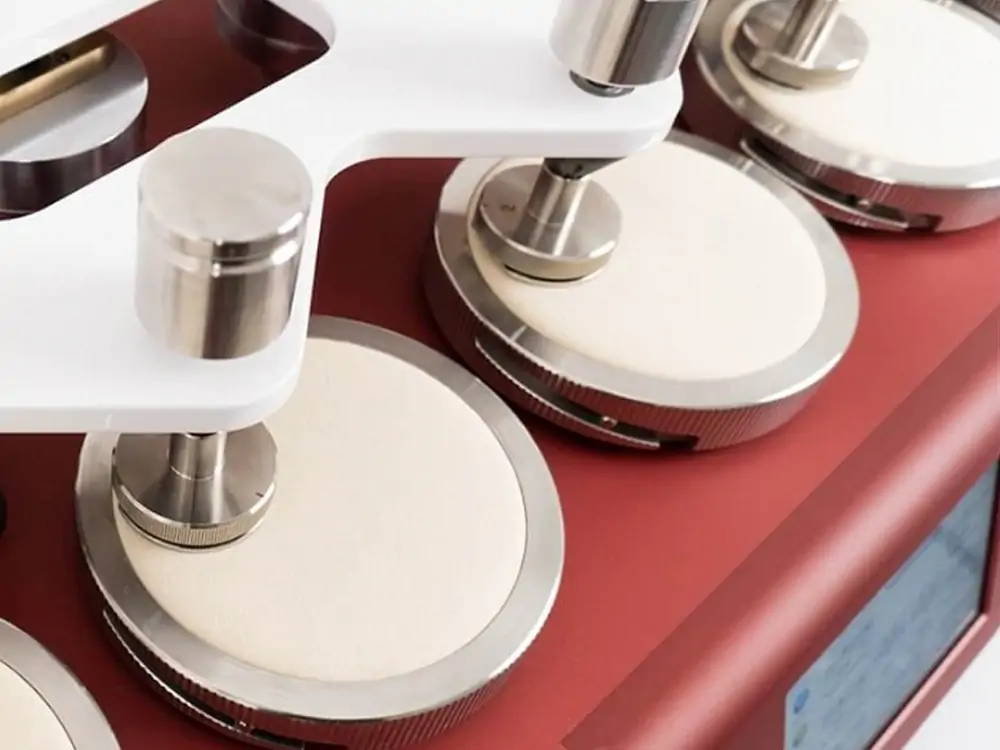In the world of testing materials, the Martindale Abrasion Test is one of the most important ways to determine how durable and resilient fabrics are. We’ll look at its rules as we go deeper into this test. We’ll check how it works and whether it contains a material’s resistance to wear and tear. We will also determine how to read Martindale test results and what makes an excellent grade.
What is the Martindale Abrasion Test? Unveiling Material Durability
Introduction to Durability Assessment
The Martindale Abrasion Test is one of the most important ways to determine how long linens and other materials will last when rough forces wear them down. It does more than think about theories. It also simulates the wear and tear that materials may experience in real life.
Emulating Real-World Conditions
The Martindale Abrasion Test tries to mimic things’ normal wear and tear. The test makes useful information by repeatedly touching or rubbing them. That is similar to the problems materials face when real people use them.
Applicability Across Industries
This test is not just for one industry. It’s for textiles, upholstery, car parts, and more. It is a popular way for manufacturers, designers, and customers to discover how materials hold up in everyday life. Because they can be used in many situations.

Mimicking Real-World Wear and Tear: A Crucial Assessment
Assessing Material Resilience
The Martindale Abrasion Test is not just any test. It is an exact way to determine how resilient a material is. This tells you how well a material can handle the repeated rubbing or damage it may face.
Data for Manufacturers and Designers
The data from the Martindale Abrasion Test is beneficial for creators and manufacturers. It helps them decide what fabrics or materials to use and ensures they meet the reliability standards for specific tasks.
Consumer-Centric Evaluation
The Martindale Abrasion Test also helps consumers by ensuring that their products are made from materials that can meet regular use. It sets a bar for durability that directly affects how long the final product lasts.
Industry-Standard Excellence: The Role of Martindale Abrasion Test
Defining Industry Standards
It’s not just a test. The Martindale Abrasion Test is the standard in the business. Its broad use shows the importance of ensuring consistent and reliable testing methods across all fields.
Gauging Resistance to Rubbing and Abrasion
One of the main goals of the Martindale Abrasion Test is to find out how resistant a material is to wear and rubbing. This measurable information becomes an essential standard for material designers.
Comparative Evaluation Across Materials
The test lets you compare and contrast different materials. The Martindale Abrasion Test is a standard way to reach how well other materials hold up against rough conditions. It can be used to test fabric’s durability for clothing or materials for commercial use.

Martindale Abrasion Test Standards: Setting the Benchmark
Introduction to Testing Consistency
For regular material testing, the Martindale Abrasion Test standards are the foundation. These standards are necessary for testing methods to be the same in all labs and industries.
ISO 12947: A Global Benchmark
ISO 12947 stands as a globally recognized standard for the Martindale Abrasion Test. Developed by the International Organization for Standardization, ISO 12947. It provides comprehensive guidelines for executing the test, from specimen preparation to the interpretation of results. It serves as a benchmark, facilitating consistency in testing practices worldwide.
ASTM D4966: Ensuring American Uniformity
In the US, ASTM D4966 is the designated standard for the Martindale Abrasion Test. The American Society publishes them for Testing and Materials. This standard outlines specific procedures and methodologies for conducting the test. Adhering to ASTM D4966 ensures uniformity in testing practices within the American industry.
Guidelines for Uniformity
These standards set rules to ensure that all Martindale Abrasion Test methods are done similarly. As long as labs in Europe, Asia, and the Americas use the same standard testing methods. The results will be the same no matter where they are located.
Crucial Role in Accuracy
Following Martindale Abrasion Test standards are not just a convenience. They are vital for making sure that test results are accurate and reliable. When testing processes are consistent, differences that could happen with different methods are handled. This lets manufacturers, designers, and researchers trust that data can be compared.
Benefits of Standard Adherence: Global Consistency
International Collaboration and Comparison
The Martindale Abrasion Test makes it easy for people worldwide to work together. It compares things that follow internationally accepted standards like ISO 12947. Researchers and manufacturers all over the world can be sure that the results they get from these standards are not only correct but also accurate. This helps everyone understand how well materials work.
Intercontinental Industry Reliability
When checking materials, especially textiles, the Martindale Abrasion Test standards are significant for ensuring that everything is reliable. Follow standards to make sure that material performance is measured consistently and accurately. No matter if you’re a fashion creator in North America or a textile manufacturer in Europe.
Consumer Confidence Through Consistency
For customers, following the Martindale Abrasion Test standards means that the quality and longevity of materials will stay the same. When you buy furniture, clothes, or anything else made of fabrics. Your belief that they were tested according to established standards gives you trust in their performance.
Innovation with a Global Perspective
Following the Martindale Abrasion Test standards worldwide keeps people from developing new ideas. Instead, it gives everyone a way to get better. Manufacturers and designers can create new ideas knowing they will be tested in line with international standards. This helps materials evolve on a global level.
Martindale Abrasion Tester Working Principle
The Martindale Abrasion Tester is a machine made to test things in a controlled way. The working concept is to repeatedly put test samples on round platforms that are rubbed against an abrasive surface. The tester system lets you control the abrasion process. It guarantees results that are always the same.

Martindale Abrasion Test Method: Precision in Action
Affixing Test Specimens
Putting test samples on the equipment is the first step in the Martindale Abrasion Test. The material must come into close contact with the rough surface for the test to work.
Defined Rubs Against Abrasive Surface
The critical part of the test is rubbing the samples against a rough surface multiple times. This controlled pressing makes the material go through the friction and wear it might go through in everyday use. It gives a good idea of how long it will last.
Replicating Real-World Friction
The goal of the test is to make the situations a material might face in the real world. The Martindale Abrasion Test simulates the friction that occurs in various scenarios. Rubbing them repeatedly against an abrasive surface, from fabrics to clothing textiles.
Continued Abrasion Until Visible Signs
The process persists until visible wear or deterioration appears on the material. This can include changes in color, texture, or the appearance of loose fibers. The Martindale Abrasion Test is designed to push the material to its limits. They are ensuring that any weaknesses or vulnerabilities become apparent through observable damage.
Interpreting Martindale Test Results: Decoding Material Resilience
Understanding the Martindale Rating
The Martindale grade is the result of the Martindale Abrasion Test. It is a number that shows how well the material can handle abrasion. The more rubs the material took before showing signs of wear, the higher the Martindale grade. This rating is a crucial way to judge the material resilience and long-lasting.
Visible Signs as Performance Indicators
To understand Martindale test results, you need to pay close attention to signs that can be seen on the material. Changes in color, texture, or the look of pilling are tangible signs of how well the material works in rough circumstances. These clear signs can help manufacturers, designers, and customers decide if the material is suitable.
Practical Application Considerations
When figuring out what the Martindale results mean, it’s crucial to consider how the information can be used in real life. It is for heavy-duty business use, like car interiors or office furniture. Where durability is essential, a higher Martindale rating might be necessary. On the other hand, materials like upholstery meant for light use may still work well even if they have a lower Martindale grade.
Continuous Improvement and Innovation
The results of the Martindale test show how well an object is doing right now and help it keep getting better. This information allows manufacturers to improve materials so they last longer. So, the Martindale Abrasion Test becomes a driving force behind new ideas in creating textiles and materials.
How to Read The Martindale Test Result?
To properly understand the Martindale test results, you must know how the material works in rough circumstances. The test gives a number, called the Martindale grade, showing how many rubs the material can take before it shows signs of damage. Higher Martindale ratings mean a material is more durable and less likely to wear down. Meanwhile, lower ratings may mean a material is more likely to wear down.
What is A Good Martindale Rating?
What makes a good Martindale rating relies on how the material will be used and what the reader expects from it. In general, higher Martindale scores are better for things that need strength. A Martindale rating above 40,000 rubs is usually suitable for heavy-duty business use. While ratings below 10,000 might be better for light residential use.

Conclusion
The Martindale Abrasion Test is essential for checking how long textiles and other materials will last. Its standardized approach includes specific testing methods and protocols. It makes sure that different businesses apply the same standards consistently and reliably. For simulating real-life wear and tear, the Martindale Abrasion Tester’s careful working principles create a controlled setting.
To properly understand Martindale test results, you need to know much about how the material works. In general, a better Martindale rating means the material will last longer. The Martindale Abrasion Test is still essential for making intelligent textile choices. Also, men, manufacturers, designers, and customers believe it lasts long and doesn’t wear down quickly.